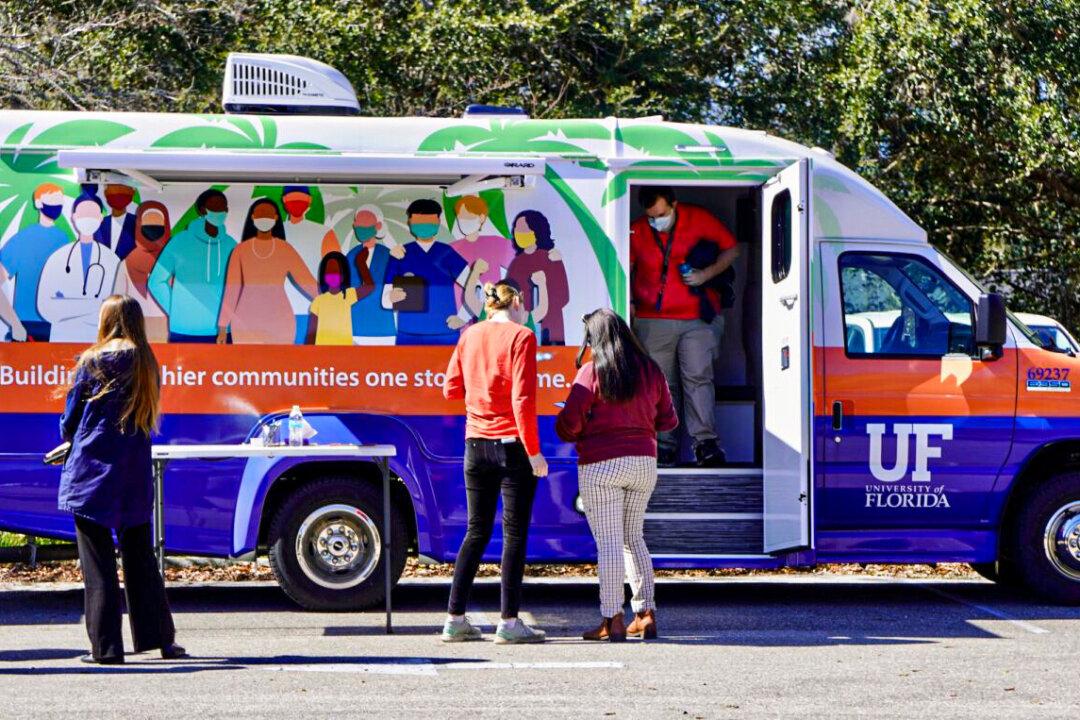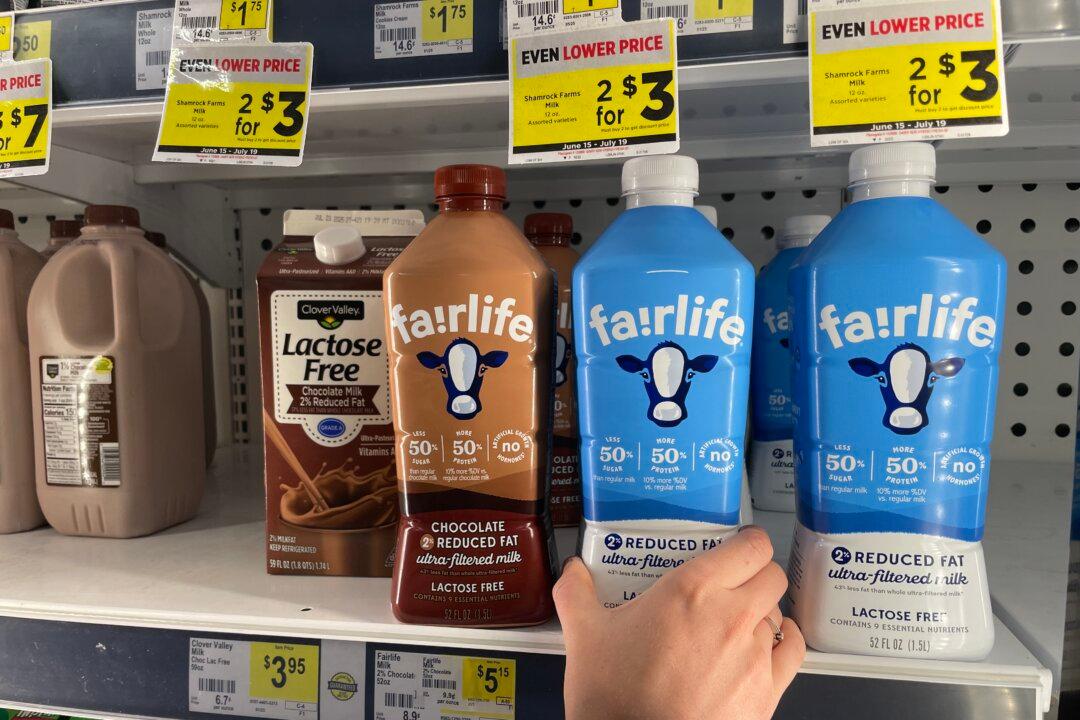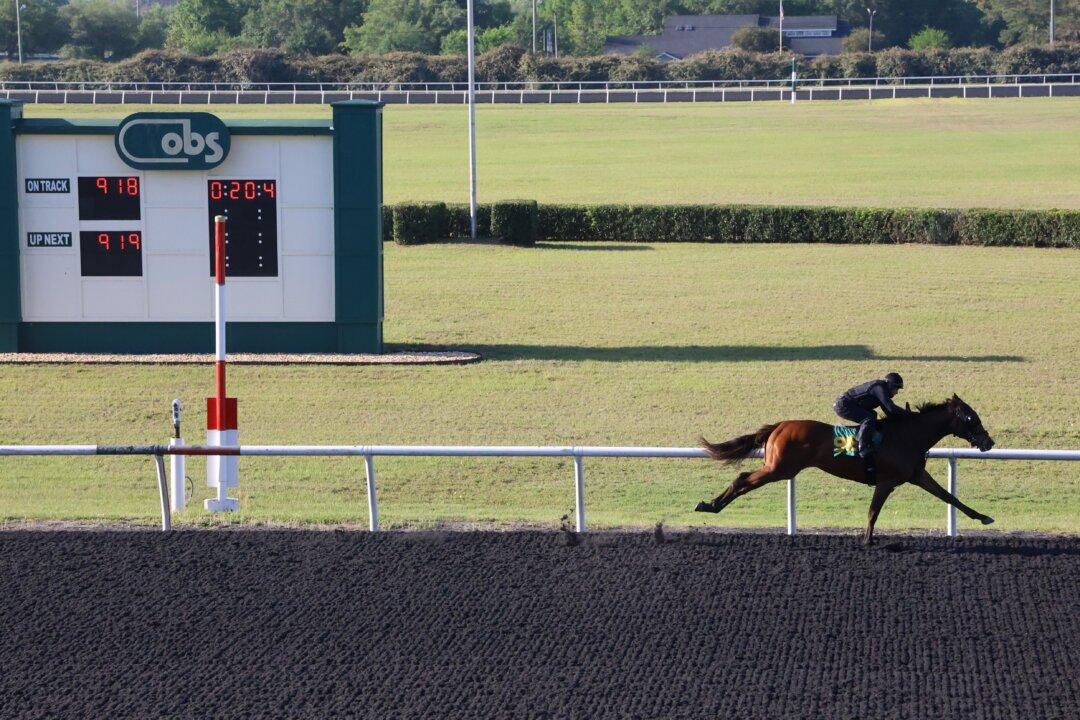GAINESVILLE, Fla.—Fleets of specially equipped, federally funded buses are rolling into targeted areas with the mission of convincing people to get the COVID-19 vaccine and giving the jabs on the spot to the newly persuaded.
Under a $6 million grant from the Centers for Disease Control and Prevention (CDC), teams in six states have worked since July to persuade visitors to the buses to take the COVID-19 vaccines. Their efforts have put 1,200 COVID-19 shots in arms, according to Catherine Striley of the University of Florida, who helps oversee the project.




